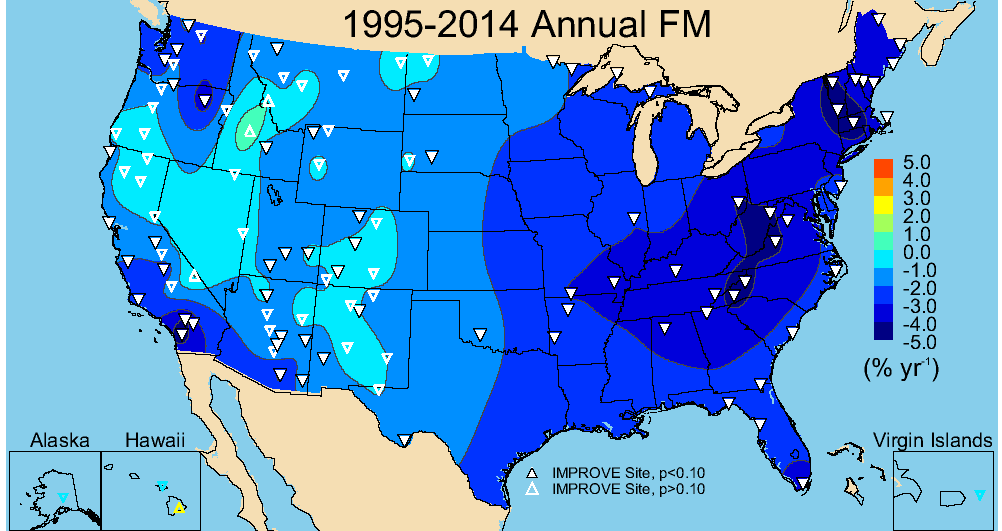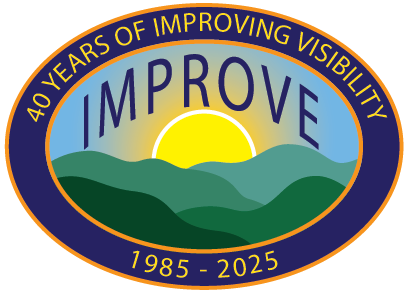Visibility Legislation
In the 1977 Clean Air Act Amendments, Congress established a national visibility goal as “prevention of any future, and the remedying of any existing, impairment of visibility in mandatory Class I federal areas which impairment results from man-made air pollution.” The amendments required the EPA to issue regulations to assure “reasonable progress” toward meeting this national goal.
In 1980, the EPA issued regulations that addressed visibility impairment that could be “reasonably attributable” to a single source or small group of sources. Regulations on regional haze resulting from the combined impact of many sources were postponed until improved modeling and monitoring techniques were developed. The 1990 Clean Air Act Amendments called for additional emphasis on regional haze and required EPA to establish the Grand Canyon Visibility Transport Commission. The Commission’s 1996 final report included technical analyses and broad-based consensus on strategies to improve visibility in 16 Class I areas on the Colorado Plateau.
In July 1997 EPA proposed regional haze regulation for public comment. The Regional Haze Rule was published on July 1, 1999.
The Regional Haze Rule calls for state and federal agencies to work together to improve visibility in all 156 federal Class I national parks and wilderness areas. States are to develop long-term strategies for reducing air pollutants emissions that cause visibility impairment. This regulation also has had additional benefits of improving visibility outside of Class I areas and reducing pollutants that contribute to ozone, fine particles, and acid deposition. Because air pollutants can be transported hundreds of miles, each of the 50 states must evaluate its contribution to haze in Class I areas and must implement emission control strategies that demonstrate reasonable progress toward the goal of no “man-made impairment” in Class I areas by 2064. The rule requires states to establish goals for each affected Class I area that improve visibility on the haziest days and ensure no degradation occurs on the clearest days.

Trends in Fine Mass from 1995-2014, as measured in the IMPROVE Program. Note the dramatic decreases in the eastern US, in some cases 5% per year for 20 years. The triangles represent IMPROVE sites. The direction of the arrow designates either a decreasing (down) or increasing (up) trend. Filled symbols are significant to the 90% confidence level (p<0.10). Unfilled triangles represent trends with p>0.10).
A major provision of the Rule is a requirement that States evaluate Best Available Retrofit Technology (BART) for electric utilities and industrial sources that began operation between 1962 and 1977. In the western states, the National Park Service estimates that more than 500,000 tons per year of sulfur dioxide and 300,000 tons per year of nitrogen oxides have been controlled under the BART program. In the eastern US, federal requirements for emissions controls for electric utilities to reduce ozone and fine particles have resulted in even larger emissions reductions, with collateral visibility improvements at Class I areas.
State implementation plans are due to EPA every ten years. The first state plans were due in December 2007, covering the period 2002 to 2018. Few states were able to meet this deadline. EPA is required to approve state plans within two years of submittal or disapprove the state plan and develop a federal plan for the state. Environmental groups petitioned EPA to take action on states plans. Most state plans were approved or partially approved in 2012. By 2016 state or federal plans were implemented in all but a few states.
In response to lessons learned from the first planning period, EPA recently signed the proposed revisions to the Regional Haze Rule. The proposed changes will revise the requirements states must follow in preparing and submitting implementation plans and progress reports for visibility impairment.

